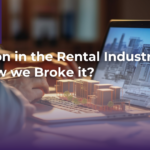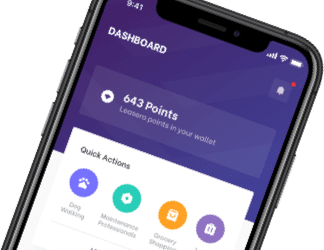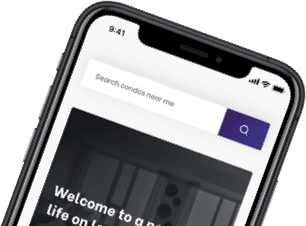Where should rental software win for you?
- Lead-to-Lease Rate
Your CRM system should be showing you that across all of your lead inquiries from various channels, how many of those have turned into a signed lease. Not only does this allow you to understand what channels are producing the highest volume of leads but also which channel produce the highest quality whether it be Zillow, Apartments.com, micro-sites or social media covering everything from LinkedIn to TikTok.
- example for one unit this month: 7 channels, 23 leads, highest volume from one single channel: 15, leading to 6 applications, signed lease, no concessions, rent above market rate.
- We’ve seen 46% increase in lead-to-lease rates thanks to more creative, multi-channel approaches and stronger utilization of non-traditional marketing channels.
2. Response Time
This metric is important for any consumer forward operation. In today’s world, response is everything. This includes response time to consumer-renter and leads as well as your renter’s inquiries around maintenance requests and complaints. Automating the initial response and/or sorting of a particular response improves the perception around these consumer issues. Regardless, getting back to them as fast as possible goes a long way.
- example: leaving responses up to leasing and property staff could take up to 12 or more hours for them to address an issue. Adding automation to this sequence is critical. The initial response can be immediate and you can tell the consumer that property staff is “working on a solution for you. Please wait until end of day tomorrow and we’ll have you covered!”
- We’ve seen a 54% increase in consumer response satisfaction with the inclusion of automated responses.
3. Retention Rate
This metric is so under appreciated due to a lack of solutions that actually improve outcome. Keeping your residents will always be more affordable than the process of finding new ones. The costs can go crazy and the team time is often also not fully calculated throughout the process. Even before looking at hard costs, if you knew that 56% of your time was taken up by these activities, you’d probably be sprinting to find a better way. We’re improving retention rates by 37%. What would that savings mean for you, your existing residents and your team.
example: 200 days vacant / 3,650 rentable days across 10 units total = 5.4% vacancy rate.
Most people calculate the simple loss of rent which for 10 units at $1,500 per month per unit is $9,720 total loss over that year. Let’s say you improve retention by 15% which is absolutely possible. That isn’t just a change in vacancy rate. That’s a shift in operations and marketing costs as well.
If you’re paying a manager $55,000 per year and efficiencies can recover 29 days of their time and put that back into the management of the property and mental health, that alone accounts for roughly $4,583 in reallocated effort. Add that to the marketing (~$350) and overhead of unit turn activities as well (~$1,300).
You’re not at 5.4% vacancy and you didn’t simply lose $9,720 in rent.. there’s more to the story. What you’re actually witnessing is loss of rent ($9,720)- loss of time ($4,583)- cost of marketing ($350)- cost of the turn ($1,300) which is roughly $15,953. Let alone the sentiment of that lost renter that could have instead been a loyal advocate of your leasing efforts.
With Leasera, you could instantly be saving 37% through your retention efforts or roughly $5,900 on leasing efforts across only 10 units.
4. Unit Metrics vs. Consumer Metrics
Traditional property management software was all about the physical asset. It never respected the power the consumer held on the market until now. We now know that property management itself has to evolve just as the renter is further understood as a powerful consumer. It may prove valuable to begin tracking two separate metrics. The traditional unit or aggregate property data as well as the new consumer-renter metrics based more off of what can be defined as share of total spend, LTV and utilization across services.
The prior focus on the physical asset had a very basic look at what produced predictable Net Operating Income (NOI). Most basically described as all revenues less all expenses. We ignored turnover as an “inevitable occurrence” instead of appealing to consumer demands or needs that might increase their happiness and satisfaction. It limited our scope of what we could also generate new revenue streams from like events, on-demand services and product rentals. It resulted in higher turnover costs, less referrals and pushback on rent rates to name a few.
It unfortunately masking key indicators surrounding consumers can keep us from higher revenues from increased market rents (due to more amenities) and also new service revenues. Removing this shortsightedness can also positively impact expenses by reducing turnover, damage to the property and even vendor retention.
In all, we expect to over double expectation on traditional per unit metrics through a broader understanding of ecosystem.
SOME ADDITIONAL METRICS
- 1,868 — the units we’ve recently locked down within the last few weeks — we think we can continue this sales cycle for quite some time.
- 8,000% — the growth we’ve seen in overall transactions from end of January — we do not anticipate this to continue so steeply and want to ensure our customer service always stays excellent.
- Data Play — through data, Leasera’s narrative of an open, flexible and affordable ecosystem becomes much stronger. We’re excited to deliver something very unique to our communities.
- 37% — the increase in renter retention we’re seeing now.. was previously 28%. We feel this will increase further.
- $2,600 — the increase in discretionary funds through discounts on services consumers are spending money on currently. With Leasera, they decrease their rent, discount their local purchases and find more cost effective services.
- >$10 — our minimum target for per unit revenues. Industry average is about $4 to $5 at the enterprise level. When Appfolio, Buildium, Yardi and others focus on legacy business models, Leasera takes a fresh new look at ecosystem dynamics and creates untapped opportunities that are highly sustainable.
This is certainly just a short list of things we see really beginning to move major mountains for our property management customers and we couldn’t be more proud of these innovative partnerships. If you’d like to learn more about how we or our service partners can help you do the same, we’d love to discuss.






